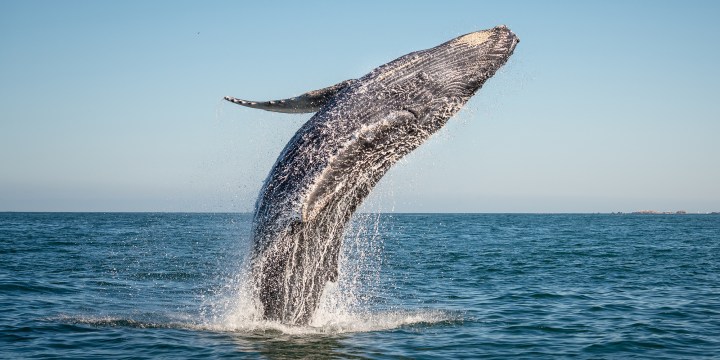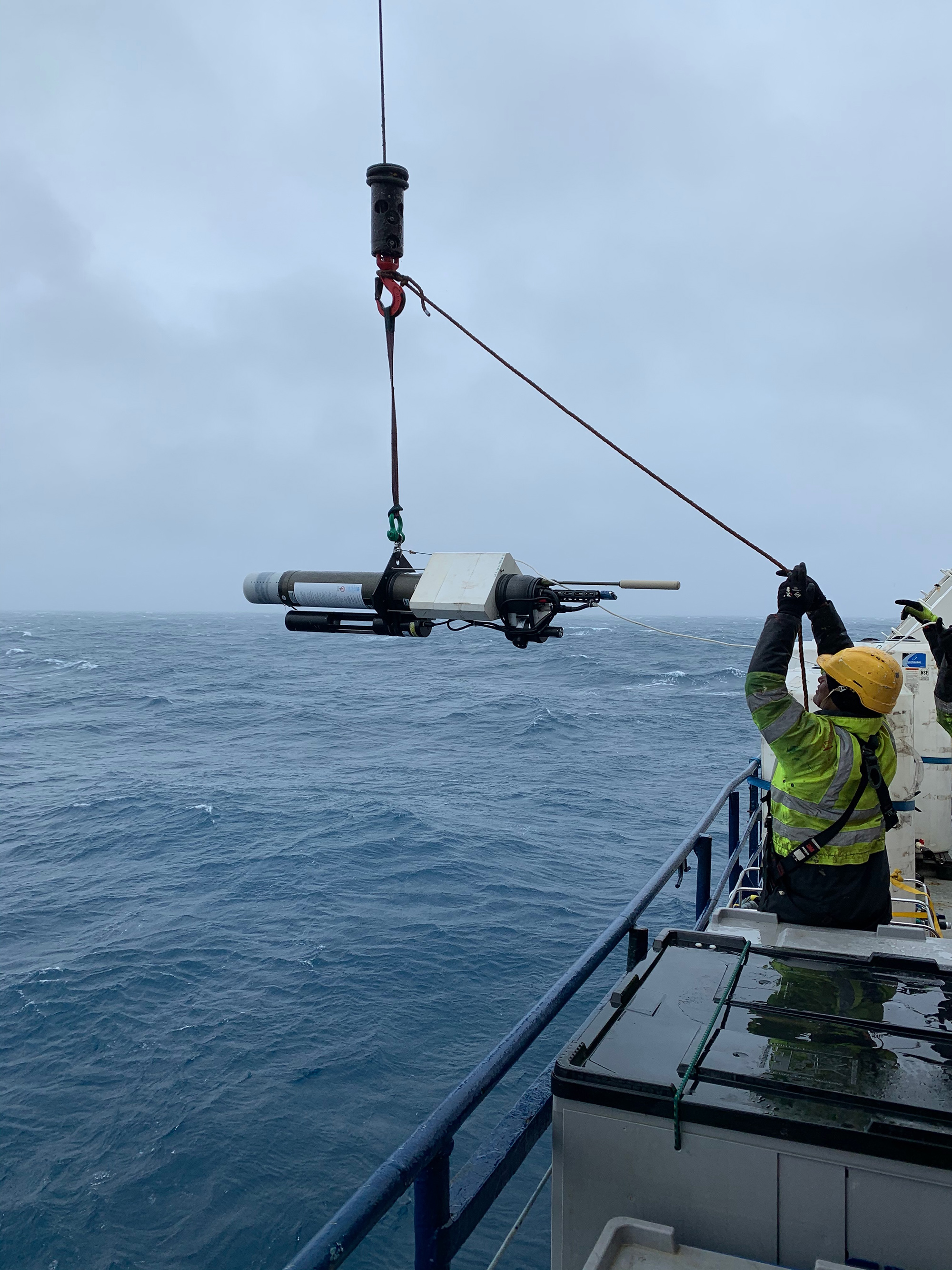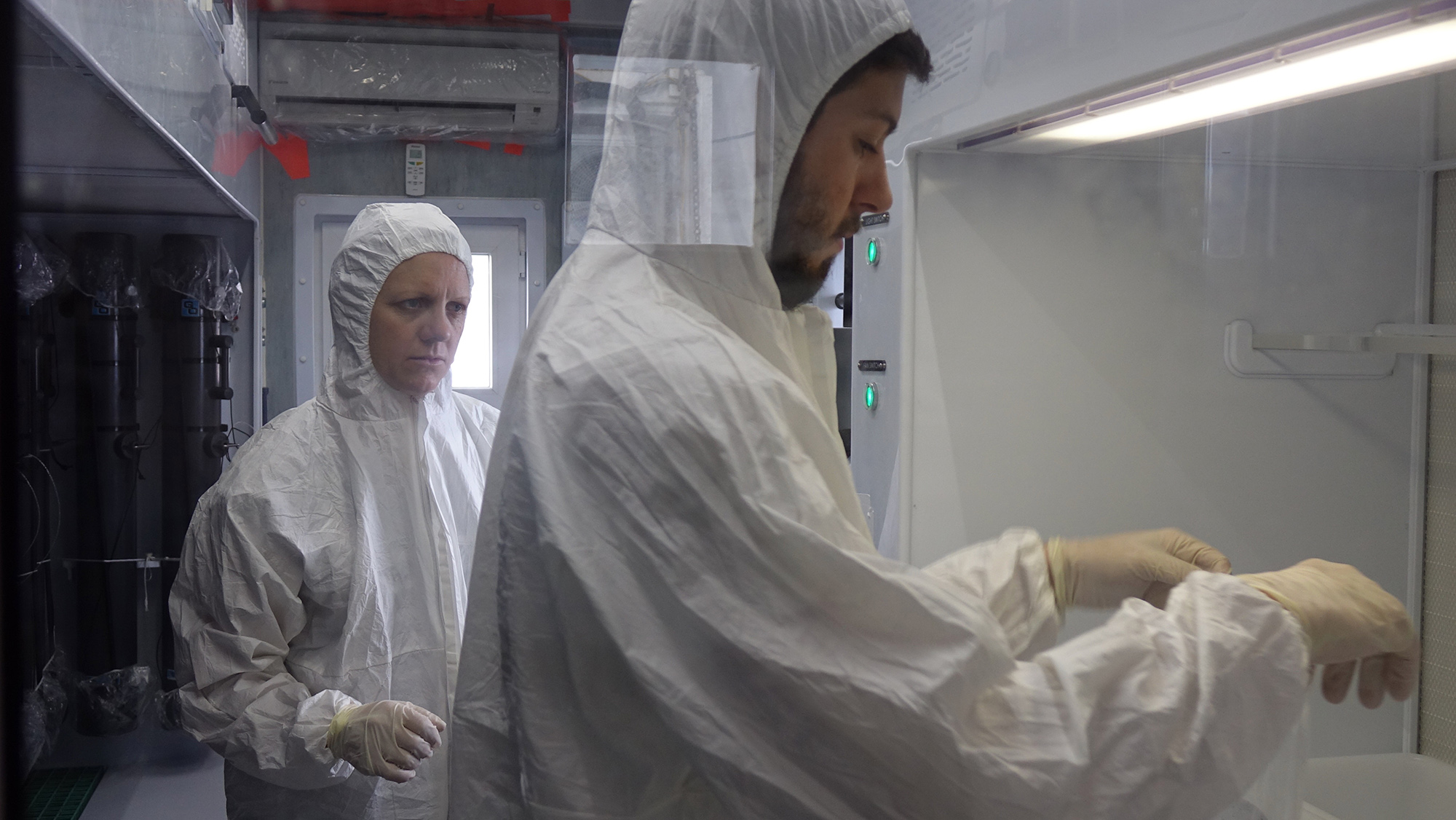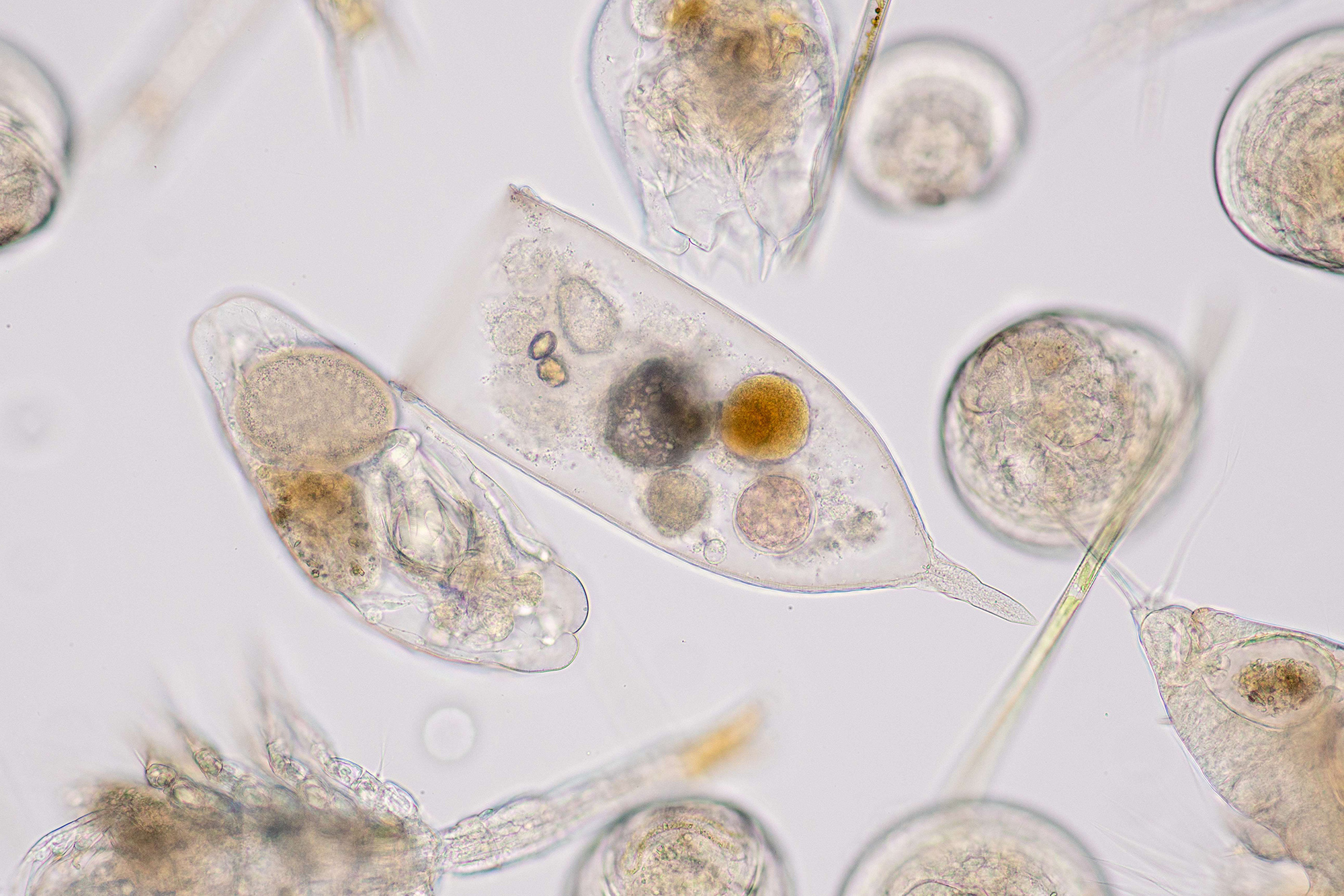SOUTHERN OCEAN SURPRISE
Evidence of iron starvation in sea food chain worries climate and ocean scientists

Something very odd seems to be happening in the Southern Ocean, that vast body of cold sea water surrounding Antarctica which absorbs heat and carbon dioxide from the atmosphere.
A new research project led by ocean scientists in South Africa suggests that there has been a significant, five-fold increase in “iron stress” in phytoplankton in the Southern Ocean over the last 26 years.
That might not seem a big deal to most people… until you consider that iron is an essential micronutrient for phytoplankton, which form the base of the entire sea food chain.
Phytoplankton are tiny, single-celled sea plants. They float by the thousands in almost every drop of water close to the ocean surface. Much like trees on the mainland, these microscopic plants take up carbon dioxide, make carbohydrates using energy from the sun, and release oxygen.
Critically, they provide food, directly or indirectly, for many other small sea creatures which eat these plants and eventually nourish much bigger creatures such as fish, seals and whales.
These microscopic sea plants are also responsible for cycling nearly half of the carbon dioxide on Earth through the process of photosynthesis, thereby helping to buffer the planet from the additional carbon loads of the human-driven climate crisis.
These are some of the reasons that the researchers are worried, because iron stress in this vast ocean may lead to a drop in the productivity of phytoplankton, which would have a negative impact on the future of Earth’s climate and ecosystem energy supplies.
The research, published in the journal Science, was led by Dr Thomas Ryan-Keogh and Dr Sandy Thomalla of the Southern Ocean Carbon-Climate Observatory at the Council for Scientific and Industrial Research (CSIR) in Cape Town, along with Prof Pedro Monteiro of Stellenbosch University and Prof Alessandro Tagliabue of the University of Liverpool. It was supported by the Department of Science and Innovation.

Southern Ocean Carbon-Climate Observatory co-lead authors Dr Thomas Ryan-Keogh and Dr Sandy Thomalla with one of the Argo floating devices used to monitor a wide range of biogeochemical parameters in the Southern Ocean. (Photo: CSIR)
Commenting on the significance of the research, Ryan-Keogh notes that the Southern Ocean is a globally important region that helps to mitigate the impacts of climate change by absorbing a significant proportion of the human-made carbon dioxide emitted through the burning of fossil fuels.
“Almost half of all the anthropogenic (human-generated) carbon dioxide that dissolves in the ocean does so here.
“Non-anthropogenic carbon dioxide in the atmosphere is regulated by plants on land and by phytoplankton in the ocean, as part of the natural carbon cycle. But changes in this cycle can influence the ability of the ocean to absorb anthropogenic carbon dioxide,” he said

A Biogeochemical Argo float is deployed in the Southern Ocean from the French research vessel Marion Dufresne. (Photo: Thomas Ryan-Keogh)
But the processes that drive the availability of dissolved iron in the Southern Ocean are not very well understood and it is not possible to measure their levels accurately over such a vast, deep area. Nor are there extensive records to determine historic changes of this key micronutrient in a region already known to be iron-limited relative to other oceans.
So, instead of trying to measure actual iron concentrations in the water, they developed a new proxy method to infer the level of iron stress in phytoplankton.
Thomalla and Ryan-Keogh acknowledge that there is not a simple way of describing the method, known as “non-photochemical quenching”, which essentially analyses the fluorescent light given off by phytoplankton during photosynthesis as an indicator of iron stress.

Oceanography and climate researchers Dr Sandy Thomalla and Dr Thomas Ryan-Keogh conduct experiments at sea to measure iron stress in a specialised laboratory on board the polar research ship SA Agulhas II. (Photo: Alexandra Sorgenicht)
In this way, they were able to determine a “significant” degree of increasing iron stress, while also drawing on data from nearly 6,000 profiles of sea water collected since 1996 from ships and floating data-collection platforms.
They also analysed historic satellite data to estimate whether there had been a corresponding decrease in the primary production of phytoplankton, linked to iron stress.
“Across this time period (1996-2022), we found that Southern Ocean phytoplankton are becoming increasingly iron stressed, which suggests that there may be a reduction in the supply of iron to the surface sunlit waters,” said Thomalla.
“This increase in iron stress impacts phytoplankton growth negatively, with the large majority of the Southern Ocean becoming less productive over time. This has important implications for the role of marine plants in driving the natural carbon cycle and ecosystem energy supplies.”

Phytoplankton are really tiny, single-celled plants. They float by the thousands in almost every drop of water close to the sunlit ocean surface. Much like trees on the mainland, these microscopic sea plants take up carbon dioxide, make carbohydrates using energy from the sun, and release oxygen. (Image: iStock)
Significantly, she said, these trends are the opposite of what is currently predicted by several Earth system models which propose instead that the Southern Ocean will become more productive over the next century (largely due to water temperature increases over time).
The researchers believe that this contradiction suggests that Earth system models may be underestimating ongoing change in the natural carbon cycle in this globally important region, which may impact the uncertainties of climate projections.
As a result, they plan to collaborate with international counterparts to further understand why the Earth system models do not appear to reproduce the current iron stress trend.
At this stage, it remains unclear whether the iron stress signals are related to altered biological behaviour of the plants due to more complex climatic factors that may increase their iron demand – or whether there has been a physical reduction in the supply of iron to the upper levels of the Southern Ocean.
For example, ocean acidification due to rising carbon dioxide levels could be making it harder for phytoplankton to absorb the available iron nutrients.
Alternatively, the poleward shift of westerly winds due to ozone depletion and increased greenhouse gases over the last 50 years may have changed the airborne supply of iron-rich dust particles from Patagonia, Southern Africa or Australia, or rising ocean temperatures might be speeding up the metabolism of phytoplankton, thereby increasing their iron demand.
Another possibility is that ocean temperature increases may be changing the manner in which different layers of the ocean mix, thereby limiting the movement of deeper, iron-rich water toward the surface.
Ryan-Keogh and Thomalla emphasise that while these are potential mechanisms that could be responsible for the increase in iron stress, saying “we cannot as yet pinpoint the causes.” DM/OBP




















 Become an Insider
Become an Insider
Fascinating work by pioneering South African scientists. This is a hugely important contribution to Southern Ocean science.